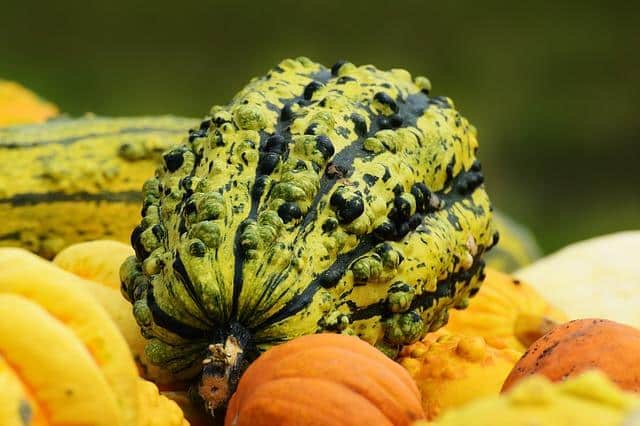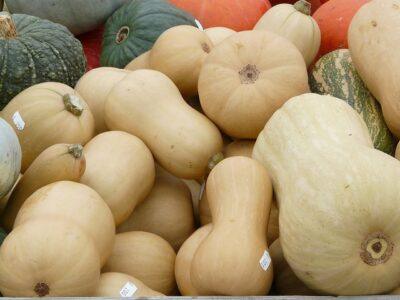Squash is easy to grow, and the rambunctious vines, huge leaves and colorful blooms add beauty to the late summer garden. However, there’s a distinct difference between summer and winter squash.
Unlike zucchini and other types of summer squash that are harvested in summer when the fruit is immature and the rind is tender, winter squash, including acorn, butternut, hubbard, spaghetti, delicata and pumpkin, are ready to pick in fall when the fruit is mature and the rind is hard.
Most types of winter squash store beautifully with proper preparation, and the flavor is enhanced by the concentration of natural sugars in the fruit. However, storage time varies. Hubbard squash stores well and lasts at least five or six months, while buttercup squash and pumpkins maintain quality for two to three months. Spaghetti squash should be used in four or five weeks.
Acorn squash, which are thin-skilled, should be used fairly soon because they last only about a month. They require no curing period; in fact, curing will actually shorten the storage life of acorn squash.
Get Started
Harvesting, curing and storing winter squash is simple. Here’s how:
Pick winter squash when the vines begin to die down in late summer or autumn. The color of the squash should be uniform and the finish dull and no longer shiny. If in doubt, poke the squash with your fingernail. The squash is ready to pick if you can’t puncture the rind.
Looking For Non-GMO Squash Seeds? Get Them From A Company You Can Trust! [2]
Don’t rush to harvest squash, as immature squash doesn’t store well. However, weather is definitely a factor. Although one or two light frosts won’t damage most types of winter squash, repeated frost or a hard freeze can do serious damage.
Cut squash from the vine with scissors, leaving about an inch of stem on squash; never twist or pull. Leave about an inch of stem on winter squash and 3 to 4 inches of stem intact on pumpkins. (Jack O’Lanterns need a good handle.)
Handle the squash with tender loving care, as any cuts or scrapes can allow pathogens to enter the squash, thus greatly shortening the storage life. If any stems loosen or break, store the squash in the refrigerator and use it soon because it won’t keep.
Place winter squash in a covered porch or other protected, well-ventilated room for 10 days to two weeks. Ideally, squash should be cured at 80 to 80 Fahrenheit to harden the rind and heal any cuts with nighttime temps above 60 degrees. You can leave just-picked winter squash in the garden to dry if weather is dry and temperatures are below 95 degrees.
After curing, brush dirt away gently, and then wipe the squash with a solution of one part water to 10 parts bleach.
Store winter squash in a single layer, not touching each other in a cool, dry, well-ventilated room. Ideal temperatures for storage are between 50 and 55 degrees Fahrenheit. Don’t store squash near pears, apples or other fruits that emit ethylene gases that decrease the life of the squash.
Check the squash every couple of weeks, and discard or use any that are showing bruises or soft spots.
What advice would you add on storing squash? Share your tips in the section below:
Bust Inflation With A Low-Cost, High-Production Garden. Read More Here. [4]


